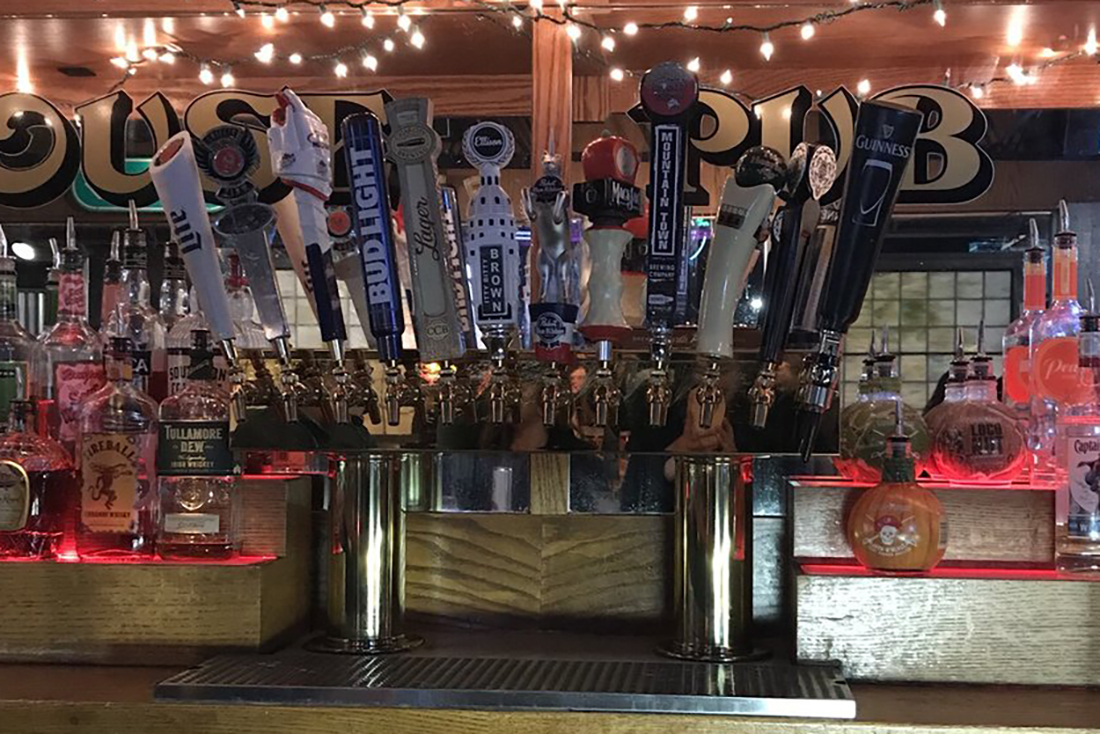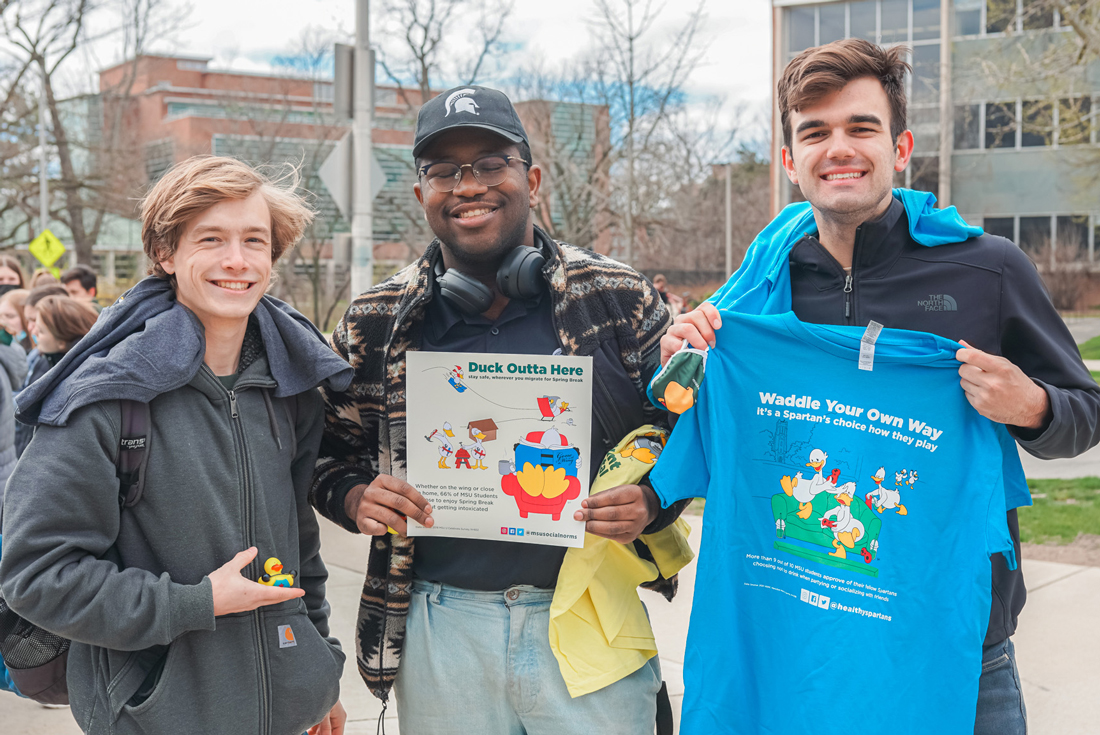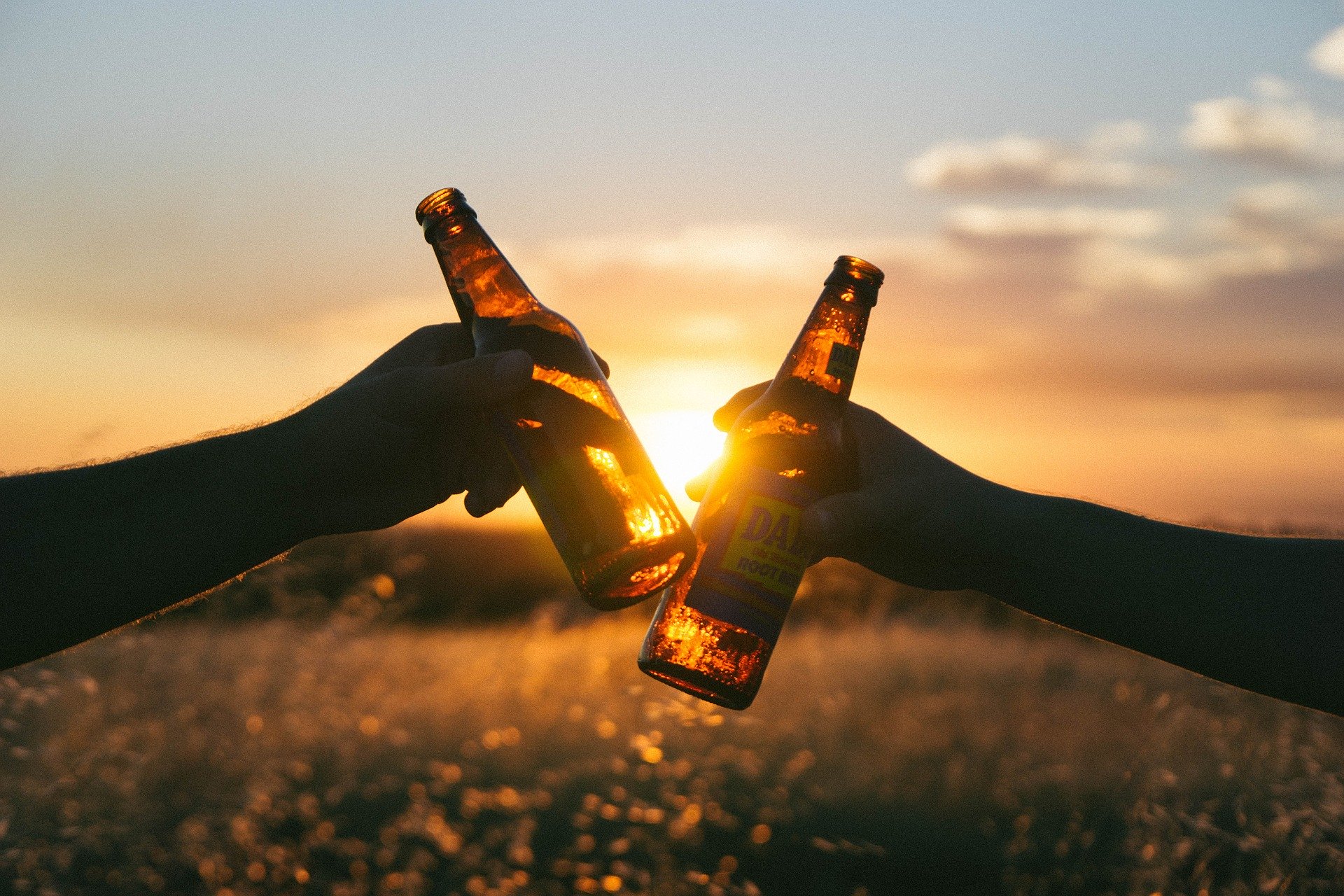References (mostly 2013-2014, with a few older selections)
Ahmed, R., Hustad, J. T., Lasalle, L., & Borsari, B. (2014). Hospitalizations for Students With an Alcohol-Related Sanction: Gender and Pregaming as Risk Factors. Journal of American College Health, 62.
Alfonso, J., Hall, T. V., & Dunn, M. E. (2014). Feedback-based alcohol interventions for mandated students: an effectiveness study of three modalities. Clinical Psychology and Psychotherapy, 20, 411–423.
Appiah, B. E., Okyere, P., Owusu-Addo, E., & Cross, R. (2014). Motivational Interviewing Interventions and Alcohol Abuse Among College Students: A Systematic Review. American Journal of Health Promotion, Mar. 26 [Epub ahead of print].
Atchley, P., Hadlock, C., & Lane, S. (2012). Stuck in the 70s: The role of social norms in distracted driving. Accident Analysis and Prevention, 48, 279-284.
Aubrey, J. S., & Smith, S. E. (2013). Development and validation of the endorsement of the hookup culture index. Journal of Sex Research, 50(5), 435.
Berger, L., Fendrich, M., & Fuhrmann, D. (2013). Alcohol mixed with energy drinks: Are there associated negative consequences beyond hazardous drinking in college students? Addictive Behaviors, 38(9), 2428-2432.
Burchell, K., Rettie, R., & Patel, K. (2013). Marketing social norms: Social marketing and the ‘social norm approach’. Journal of Consumer Behavior, 12, 1-9.
Christian, J., Bagozzi, R., Abrams, D., & Rosenthal, H. (2012). Social influence in newly formed groups: The roles of personal and social intentions, group norms, and social identity. Personality and Individual Differences, 52(3), 255.
Corbin, W. R., Morean, M. E., & Benedict, D. (2008). The Positive Drinking Consequences Questionnaire (PDCQ): Validation of a new assessment tool. Addictive Behaviors, 33, 54-68.
Cunningham, J. A., Neighbors, C., Bertholet, N., & Hendershot, C. S. (2013). Use of mobile devices to answer online surveys: implications for research. BMC Research Notes, 6, 258.
DeJong, W., & Blanchette, J. (2014). Case Closed: Research Evidence on the Positive Public Health Impact of the Age 21 Minimum Legal Drinking Age in the United States. Journal of Studies on Alcohol and Drugs, Supplement 17, 108–115.
Demers, A., Beauregard, N., & Glicksman, L. (2013). College alcohol-control policies and students’ alcohol consumption: a matter of exposure? Contemporary Drug Problems, 40(2), 191.
Dohnke, B., Weiss-Gerlach, E., & Spies, C. D. (2011). Social influences on the motivation to quit smoking: Main and moderating effects of social norms. Addictive Behaviors, 36(4), 286-293.
Eisenberg, M. E., Toumbourou, J. W., Catalano, R. F., & Hemphill, S. A. (2014). Social Norms in the Development of Adolescent Substance Use: A Longitudinal Analysis of the International Youth Development Study. Journal of Youth and Adolescence. [Epub March 15, 2014].
Forney, K. J., & Ward, R. M. (2013). Examining the moderating role of social norms between body dissatisfaction and disordered eating in college students. Eating Behaviors, 14, 73-78.
Foster, C., Caravelis, C., & Kopak, A. (2014). National College Health Assessment Measuring Negative Alcohol-Related Consequences among College Students. American Journal of Public Health Research, 2(1), 1-5.
Foster, D. W., Quist, M. C., Young, C. M. Bryan, J. L., Nguyen, M-L, & Neighbors, C. (2013). Benefit finding as a moderator of the relationship between spirituality/religiosity and drinking. Addictive Behaviors, 38(11), 2647-2652.
Freedman, K. S., Nelson, N. M., & Feldman, L. L. (2012). Smoking Initiation Among Young Adults in the United States and Canada, 1998-2010: A Systematic Review. Preventing Chronic Disease, 9.
Glazer, E., Smith, S. W., Atkin, C., & Hamel, L. M. (2010). The Effects of Sensation Seeking, Misperceptions of Peer Consumption, and Believability of Social Norms Messages on Alcohol Consumption. J Health Communication, 15(8), 825-839.
Graham, K., Bernards, S., Osgood, D. W., Abbey, A., Parks, M., Flynn, A., …, & Wells, S. (2014). “Blurred Lines?” Sexual Aggression and Barroom Culture. Alcoholism: Clinical and Experimental Research. (First published online Mar 3, 2014).
Halim, A., Hasking, P., & Allen, F. (2012). The role of social drinking motives in the relationship between social norms and alcohol consumption. Addictive Behaviors, 37(12), 1335-1341.
Heinz, A. J., Giedgowd, G. E., Crane, N. A., Veileux, J. C., Conrad, M., Braun, A. R., Olejarska, N. A., & Kassel, J. D. (2013). A comprehensive examination of hookah smoking in college students: Use patterns and contexts, social norms and attitudes, harm perception, psychological correlates and co-occurring substance use. Addictive Behaviors, 38(11), 2751.
Hoffman, E. W., Pinkleton, B., E., Austin, E. W., & Reyes-Velazquez, W. (2014). Exploring College Students’ Use of General and Alcohol-Related Social Media and Their Associations to Alcohol-Related Behaviors. Journal of American College Health, 62.
Holt, L. J., Armeli, S., Tennen, H., Austad, C. S., Raskin, S. A., Fallahi, C. R., Wood, R., Rivkah, R., Ginley, M. K., Pearlson, G. D. (2013). A person-centered approach to understanding negative reinforcement drinking among first year college students. Addictive Behaviors, 38, 2937-2944.
Hustad, J. T. P., Pearson, M. R., Neighbors, C., & Borsari, B., (2014). The Role of Alcohol Perceptions as Mediators Between Personality and Alcohol-Related Outcomes Among Incoming College-Student Drinkers. Psychology of Addictive Behaviors, Jan 27.
Jang, S. A. (2012). Self-Monitoring as a Moderator Between Descriptive Norms and Drinking: Findings Among Korean and American University Students. Health Communication, 27(6), 546-558.
Jang, S. A., Rimal, R. N., Cho, N. A. (2013). Normative Influences and Alcohol Consumption: The Role of Drinking Refusal Self-Efficacy. Health Communication, 28(5), 443-451.
Keyes, K. M., Schulenberg, J. E., O’Malley, P. M., Johnston, L. D., Bachman, J. G., Li, G., & Hasin, D. (2011). The social norms of birth cohorts and adolescent marijuana use in the United States, 1976-2007. Addiction, 106(10), 1790.
Killos, L. G., Hancock, L. C., McGann, A. W., & Keller, A. E. (2010). Do “Clicker” Educational Sessions Enhance the Effectiveness of a Social Norms Marketing Campaign? J American College Health, 59(3), 228-230.
Kilmartin, C., Smith, T., Green, A., Heinzen, H., Kuchler, M., & Kolar, D. (2008). A Real Time Social Norms Intervention to Reduce Male Sexism. Sex Roles, 59(3), 264-273.
Kilmer, J. R., Cronce, J. M., & Larimer, M. E. (2014). College Student Drinking Research From the 1940s to the Future: Where We Have Been and Where We Are Going. Journal of Studies on Alcohol and Drugs, Supplement 17, 26-35.
Kypri, K., Vater, T., Bowe, S. J., Saunders, J. B., Cunningham, J. A., Horton, N. J., & McCambridge, J. (2014). Web-based alcohol screening and brief intervention for university students: a randomized trial. JAMA, 311(12), 1218-24.
LaBrie, J. W., Atkins, D. C., Neighbors, C., Mirza, T., & Larimer, M. E. (2012). Ethnicity specific norms and alcohol consumption among Hispanic/Latino/a and Caucasian students. Addictive Behaviors, 37(4), 573-576.
LaBrie, J. W., Hummer, J. F., & Neighbors, C. (2008). Self-consciousness moderates the relationship between perceived norms and drinking in college students. Addictive Behaviors, 33, 1529-1539.
LaBrie, J. W., Hummer, J. F., Grant, S., & Lac, A. (2010). Immediate reductions in misperceived social norms among high-risk college student groups. Addictive Behaviors, 35(12), 1094-1101.
Labrie, J. W., Lewis, M. A., Atkins, D. C., Neighbors, C., Zheng, C., Kenney, S. R., Napper, … Larimer, M. E. (2013). RCT of Web-Based Personalized Normative Feedback for College Drinking Prevention: Are Typical Student Norms Good Enough? Journal of Consulting and Clincal Psychology, 81(6), 1074-1086.
Lally, P., Bartle, N. & Wardle, J. (2011). Social norms and diet in adolescents. Appetite, 57(3), 623-627.
Lazuras, L., Rodafinos, A., & Eiser, J. R. (2011). Adolescents’ Support for Smoke-Free Public Settings: The Roles of Social Norms and Beliefs About Exposure to Secondhand Smoke. J Adolescent Health, 49, 70-75.
Lee, C. M., Kilmer, J. R., Neighbors, C., Atkins, D. C., Zheng, C., Walker, D. D., Larimer, M. E. (2013). Indicated prevention for college student marijuana use: a randomized controlled trial. Journal of Consulting and Clinical Psychology, 81(4), 702.
Lewis, M. A., Atkins, D. C., Blayney, J. A., Dent, D. V., Kaysen, D. L. (2013). What is hooking up? Examining definitions of hooking up in relation to behavior and normative perceptions. The Journal of Sex Research, 50(8), 757.
Lindgren, K. P., Neighbors, C., Teachman, B. A.. Wiers, R. W., Westgate, E., Greenwald, A. G. (2013). I Drink Therefore I am: Validating Alcohol-Related Implicit Association Tests. Psychology of Addictive Behaviors, 27(1), 1-13.
Livingston, J. A., Testa, M., Hoffman, J. H., & Windle, M. (2010). Can parents prevent heavy episodic drinking by allowing teens to drink at home? Addictive Behaviors, 35, 1105-1112.
Lorant, V., Nicaise, P., Soto, V. E., D’hoore, W. (2013). Alcohol drinking among college students: college responsibility for personal troubles. BMC Public Health, 13, 615.
Mabry, A., & Mackert, M. (2014). Advancing use of norms for social marketing: extending the theory of normative social behavior. International Review on Public and Nonprofit Marketing, Jan. 9.
Mallett, K. A., Varvil-Weld, L., Borsari, B., Read, J. P., Neighbors, C., & White, H. R. (2013). An Update of Research Examining College Student Alcohol-Related Consequences: New Perspectives and Implications for Interventions. Alcoholism: Clinical and Experimental Research, 37(5), 709.
Marchell, T. C., Lewis, D. D., Croom, K., Lesser, M. L., Murphy, S. H., Reyna, V. F., …, & Staiano-Coico, L. (2013). The Slope of Change: An Environmental Management Approach to Reduce Drinking on a Day of Celebration at a US College. Journal of American College Health, 61(6).
Martens, M. P., Smith, A. E., & Murphy, J. G. (2013). The Efficacy of Single-Component Brief Motivational Interventions Among at-Risk College Drinkers. Journal of Consulting and Clinical Psychology, 81(4), 691-701.
Martin, J. L., Groth, G., Buckner, L., Gale, M. M., & Kramer, M. E. (2013). Perceived drinking norms among black college students: The race of reference group members. Addictive Behaviors, 38(10), 2586-2588.
Martin, S. (2012). 98% of HBR readers love this article: businesses are just beginning to understand the power of “social norms”. Harvard Business Review, 90(10), 23.
Mbilini, L. F., Neighbors, C., Walker, D. D., Roffman, R. A., Zegree, J., Edleson, J., & O’Roarke, A. (2011). A Telephone Intervention for Substance-Using Adult Male Perpetrators of Intimate Partner Violence. Research on Social Work Practice, 21(1), 43-56.
McBride, N. M., Barrett, B., Moore, K. A., & Schonfeld, L. (2014). The Role of Positive Alcohol Expectancies in Underage Binge Drinking Among College Students. Journal of American College Health, 62.
Merrill, J. E., Read, J. P., & Colder, C. R. (2013). Normative perceptions and past-year consequences as predictors of subjective evaluations and weekly drinking behavior. Addictive Behaviors, 38(11), 2625-2634.
Mollen, S., Rimal, R. N., & Lapinski, M. K. (2010). What Is Normative in Health Communication Research on Norms? A Review and Recommendations for Future Scholarship. Health Communication, 25, 544-547.
Mollen, S., Rimal, R. N., Ruiter, R. A. C., & Gerjo, K. (2013). Healthy and unhealthy social norms and food selection: Findings from a field-experiment. Appetite, 65(1), 83-89.
Morgenstern, M., Isensee, B., Sargent, J. D., & Hanewinkel, R. (2011). Exposure to alcohol advertising and teen drinking. Preventive Medicine,52(2), 146-151.
Napper, L. E., Hummer, J. F., Lac, A., & Labrie, J. W. (2014). What Are Other Parents Saying? Perceived Parental Communication Norms and the Relationship Between Alcohol-Specific Parental Communication and College Student Drinking. Psychology of Addictive Behaviors, 28(1), 31-41.
Neighbors, C., Jensen, M., Tidwell, J., Walter, T., Fossos, N., & Lewis, M. (2011). Social-norms interventions for light and nondrinking students. Group Process Intergroup Relations, 14, 651.
Neighbors, C., Lostutter, T. W., Whiteside, U., Fossos, N., Walker, D. D., & Larimer, M. E. (2007). Injunctive Norms and Problem Gambling among College Students. J Gambling Studies, 23(3), 259-273.
 Nguyen, M-L., & Neighbors, C. (2013). Self-determination, perceived approval, and drinking: Differences between Asian Americans and Whites. Addictive Behaviors, 38(3), 1656.
Nguyen, M-L., & Neighbors, C. (2013). Self-determination, perceived approval, and drinking: Differences between Asian Americans and Whites. Addictive Behaviors, 38(3), 1656.
Nguyen, N., Walters, S. T., Wyatt, T. M., & DeJong, W. (2011). Use and correlates of protective drinking behaviors during the transition to college: Analysis of a national sample. Addictive Behaviors, 36(10), 1008-1014.
Nolan, J. M. (2011). The cognitive ripple of social norms communications. Group Process & Intergroup Relations, 14(5 SI), 689-702.
Paek, H-J., & Hove, T. (2012). Determinants of Underage College Student Drinking: Implications for Four Major Alcohol Reduction Strategies. Journal of Health Communication, 17, 659-676.
Palfai, T. P., Winter, M., Lu, J., Rosenfloom, D., & Saitz, R. (2014). Personalized Feedback as a Universal Prevention Approach for College Drinking: A Randomized Trial of an e-Mail Linked Universal Web-Based Alcohol Intervention. Journal of Primary Prevention, 35(2), 75-84.
Park, A., Kim, J., Gellis, L. A., Zaso, M. J., & Maisto, S. A. (2014). Short-Term Prospective Effects of Impulsivity on Binge Drinking: Mediation by Positive and Negative Drinking Consequences. J American College Health, Jun 5:1-29. [Epub ahead of print].
Paschall, M. J., Ringwalt, C., Wyatt, T., & Dejong, W. (2014). Effects of an online alcohol education course among college freshmen: an investigation of potential mediators. J Health Communication, 19(4), 392-412.
Patrick, M. E., Lee, C. M., & Neighbors, C. (2014). Web-based intervention to change perceived norms of college student alcohol use and sexual behavior on Spring Break. Addictive Behaviors, 39, 600-606.
Patrick, M. E., Schulenberg, J. E., Martz, M. E., Maggs, J. L., O’Malley, P. M., Johnston, L. D. (2013). Extreme Binge Drinking Among 12th-Grade Students in the United States: Prevalence and Predictors. JAMA Pediatrics, 167(11), 1019-1025.
Patrick, M. E., Singer, E., Boyd, C. J., Cranford, J. A., & McCabe, S. E. (2013). Incentives for college student participation in web-based substance use surveys. Addictive Behaviors, 38(3), 1710-1714.
Pedersen, E. R., & Paves, A. P. (2014). Comparing perceived public stigma and personal stigma of mental health treatment seeking in a young adult sample. Psychiatry Research, 219, 143-150.
Pedersen, E. R., Hsu, S. H., Neighbors, C., Paves, A. P., & Larimer, M. E. (2013). Exploring relationships between facets of self-esteem and drinking behavior among diverse groups of young adults. Addictive Behaviors, 38(10), 2581.
Pelletier, J. E., Graham, D. J., & Laska, M. N. (2014). Social Norms and Dietary Behaviors among Young Adults. American Journal of Health Behavior, 38, 144-152.
Perkins, H. W., Linkenbach, J. W., Lewis, M. A., & Neighbors, C. (2010). Effectiveness of social norms media marketing in reducing drinking and driving: A statewide campaign. Addictive Behaviors, 35(10), 866-874.
Prince, M. A., & Carey, K. B. (2010). The malleability of injunctive norms among college students. Addictive Behaviors, 35(11), 940-947.
Procter-Scherdtel, A., & Collins, D. (2013). Social norms and smoking bans on campus: interactions in the Canadian university context. Health Education Research, 28(1), 101-112.
Rauhut, H., & Winter, F. (2010). A sociological perspective on measuring social norms by means of strategy method experiments. Social Science Research, 39(6), 1181-1194.
Ray, A. E., Stapleton, J. L., Turrisi, R., & Philion, E. (2012). Patterns of drinking-related protective and risk behaviors in college student drinkers. Addictive Behaviors, 37, 449-455.
Rinker, D. V., & Neighbors, C. (2013). Reasons for not drinking and perceived injunctive norms as predictors of alcohol abstinence among college students. Addictive Behaviors, 38(7), 2261.
Rinker, D. V., & Neighbors, C. (2013). Social influence on temptation: Perceived descriptive norms, temptation and restraint, and problem drinking among college students. Addictive Behaviors, 38(12), 2918.
Rodriguez, L. M., Dibello, A. M., & Neighbors, C. (2013). Perceptions of partner drinking problems, regulation strategies and relationship outcomes. Addictive Behaviors, 38(12), 2949.
Rodriguez, L. M., Neighbors, C., & Foster, D. W. (2014). Priming Effects of Self-Reported Drinking and Religiosity. Psychology of Addictive Behaviors, 28(1), 1-9.
Rodriguez, L. M., Overup, C. S., & Neighbors, C. (2013). Perceptions of Partners’ Problematic Alcohol Use Affect Relationship Outcomes Beyond Partner Self-Reported Drinking: Alcohol Use in Committed Romantic Relationships. Psychology of Addictive Behaviors, 27(3), 627-638.
Rossano, M. J. (2012). The Essential Role of Ritual in the Transmission and Reinforcement of Social Norms. Psychological Bulletin, 138(3), 529-549.
Scott-Sheldon, L. A. J., Carey, K. B., Elliott, J. C., Garey, L., & Carey, M. P. (2014). Efficacy of Alcohol Interventions for First-Year College Students: A Meta-Analytic Review of Randomized Controlled Trials. Journal of Consulting and Clinical Psychology, Jan. 20.
Scribner, R. A., Mason, K. R., Simonsen, N. R., Theall, K., Chotalia, J., Johnson, S., Schneider, S. K., & DeJong, W. (2010). An Ecological Analysis of Alcohol-Outlet Density and Campus-Reported Violence at 32 US Colleges. J Studies of Alcohol and Drungs, 71, 184-191.
Scribner, R. A., Theall, K. P., Mason, K., Simonson, N., Schneider, S. K., Towvim, L. G., & DeJong, W. (2011). Alcohol Prevention on College Campuses: The Moderating Effect of the Alcohol Environment on the Effectiveness of Social Norms Marketing Campaigns. Jounal of Studies on Alcohol and Drugs, 72(2), 232-239.
Sheehan, B. E., Lau-Barraco, C., & Linden, A. N. (2014). An Examination of Risky Drinking Behaviors and Motivations for Alcohol Use in a College Sample. Journal of American College Health, 61(8), 444-452.
Suragh, T. A., Berg, C. J, & Nehl, E. J. (2013). Psychographic Segments of College Females and Males in Relation to Substance Use Behaviors.Social Marketing Q, 19(3), 172-187.
Wells, S., Flynn, A., Tremblay, P. F., Dumas, T., Miller, P., & Graham, K. (2014). Linking masculinity to negative drinking consequences: the mediating roles of heavy episodic drinking and alcohol expectancies. J Studies of Alcohol and Drugs, 75(3), 510-519.
White, A., & Hingson, R. (2013). The Burden of Alcohol Use Excessive Alcohol Consumption and Related Consequences Among College Students. Alcohol Research- Current Reviews, 35(2), 201-218.
York, V. K., Brannon, L. A., & Miller, M. M. (2012). Marketing responsible drinking behavior: comparing the effectiveness of responsible drinking messages tailored to three possible “personality” conceptualizations. Health Marketing Quarterly, 29(1), 49-65.
Zandy, S. L., Pang, J. S., Ho, M-H. R., & Matthews, D. B. (2013). Singaporean College Students Overpour Drinks Similar to Western Populations: Influence of Peer Presence in a Simulated Alcohol-Pouring Task. Alcoholism: Clinical and Experimental Research, 37(11), 1963.






